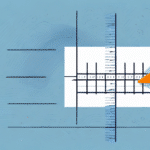How to Use the USPS Girth Calculator
If you are looking to ship a package through USPS, it is essential to ensure that your package meets the girth requirements of the courier. But what exactly is girth, and why does it matter for USPS shipping?
Understanding the USPS Girth Calculator
Girth is the combined measurement of the thickest part of your package and its length. USPS measures girth as part of its dimensional weight pricing system, which factors in the size of a package along with its weight to determine the shipping cost. Understanding girth is crucial because oversized packages can incur additional fees or even be rejected by the courier.
It’s important to note that the USPS girth calculator only applies to packages that are larger than a certain size. For packages that are smaller than the minimum size requirement, only the weight of the package is used to determine the shipping cost. Also, girth calculation may vary slightly depending on the courier. It's always a good idea to double-check the girth measurement and shipping requirements with the courier you plan to use.
Why Girth Matters for USPS Shipping
Packages that exceed USPS size regulations can be subject to additional fees or even returned to the sender. The courier may also refuse to accept your package if it exceeds size limits. Understanding girth requirements can help you choose the right shipping method and cost while ensuring your package arrives at its destination without any issues.
When calculating girth, it is important to measure the length, width, and height of the package. Even if your package is within the length limit, it may still be rejected if it is too wide or too tall. Measure your package carefully and use USPS’s online calculator to determine if it meets the girth requirements.
Understanding girth requirements can also help you save money on shipping costs. USPS offers different shipping methods based on package size and weight, and choosing the right method can result in significant savings.
What Items are Affected by USPS Girth Restrictions?
While USPS sets girth limits to ensure shipping efficiency and safety, some items, such as sporting goods, machinery, or musical instruments, may exceed those limits. In such cases, you may have to use alternate shipping providers or break your shipment down into multiple packages.
For example, Priority Mail Express has a maximum girth limit of 108 inches, while Priority Mail has a limit of 130 inches. Additionally, if you are shipping internationally, you may encounter different girth restrictions and size limitations. It is crucial to research the shipping regulations of the destination country to avoid any issues or delays in delivery.
How to Measure Girth for USPS Shipping
To measure girth, use a measuring tape to measure the length, width, and height of your package. The girth is the sum total of the package’s two longest sides and the thickness of the package. Ensure the package is flat on the ground with no bulges or curves for accuracy.
The maximum girth allowed for Priority Mail and Priority Mail Express is 108 inches, while the maximum girth for Parcel Select and Parcel Select Lightweight is 130 inches. If your package exceeds these limits, consider alternative shipping options or break up the contents into multiple packages.
Tips for Accurately Measuring Package Girth
- Use a ruler or measuring tape specifically designed to measure length and width.
- Round up to the nearest inch as USPS rounds up any fraction of an inch to the nearest whole inch.
- If your package is oddly shaped, measure each side's length accurately and calculate the girth accordingly.
Girth is the measurement around the thickest part of the package, typically the height plus the width multiplied by two. If you’re unsure, consider using a girth measuring tool or consulting with your shipping carrier for guidance.
How to Calculate USPS Girth Online
To calculate USPS girth online, use the USPS girth calculator available on their website. Enter your package’s dimensions, including its length, width, and height. The calculator will determine the girth and calculate the dimensional weight.
USPS uses dimensional weight to determine the cost of shipping packages. By using the USPS girth calculator, you can ensure accurate girth calculation and avoid unexpected shipping costs.
Using the USPS Girth Calculator: Step-by-Step Guide
To use the USPS girth calculator, follow these steps:
- Visit the USPS website and navigate to the girth calculator page.
- Enter the dimensions of your package: length, width, and height.
- The calculator will determine the girth and calculate the package’s dimensional weight.
The USPS girth calculator is particularly useful for determining the shipping cost of irregularly shaped packages and helps you avoid unexpected shipping costs.
Choosing the Right USPS Shipping Method Based on Girth
Once you know your package’s girth and weight, choose the right USPS shipping service to meet your needs. USPS offers various shipping options depending on the package’s weight, size, and destination. Be sure to check the specific requirements for each shipping service before selecting one for your package.
How to Reduce Package Girth for Cheaper Shipping Costs
If your package exceeds USPS size regulations, you can reduce its girth by repacking or opting for a vacuum-sealed packaging option. Removing any excess materials from your package may help reduce its size and lower shipping costs. Another way to reduce package girth is to use a shipping box that is the right size for your item. Consider using a shipping calculator to determine the most cost-effective shipping option for your package.
Common Mistakes to Avoid When Using the USPS Girth Calculator
- Accurately measure your package’s dimensions and account for the thickness of the package.
- Round up to the nearest inch to account for fractional inches.
- Choose a shipping service appropriate for your package’s weight, size, and destination to avoid surprises.
- Properly package your item to avoid damage during transit.
- Double-check the recipient’s address information before shipping.
Understanding Additional Fees for Oversized Packages
If your package exceeds USPS regulations, additional fees may apply in addition to the standard shipping cost. It is essential to account for any additional fees when budgeting for shipping costs and avoid exceeding USPS girth limits whenever possible.
How to Pack Your Items to Meet USPS Girth Requirements
When planning for USPS shipping, ensure that your package is packed efficiently, taking into account the items’ dimensions and size. Use lightweight materials for cushioning, and ensure that your package is tightly packed without any gaps or loose spaces. Pack your items carefully and efficiently to ensure they meet USPS girth requirements.
Comparing Other Shipping Providers’ Girth Calculators
While USPS has specific girth requirements, other courier services may have different guidelines. If you plan to use alternate courier services, make sure to check their website for their specific girth requirements and calculating tools.
Conclusion
Understanding girth and using the USPS girth calculator is critical to ensuring your package reaches its destination without any issues or additional fees. Take time to measure your package’s dimensions accurately, and choose the best shipping service based on your package’s size, weight, and destination. With proper planning and measurement, you can ship your package with ease and confidence.






















